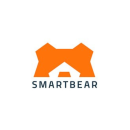Man builds computer. Man programs operating system to recognize voice commands. Interactive machine assists man through adventures in space. Man lives long and prospers.
Sound familiar? That’s because over 50 years ago, a little show called Star Trek first presented unimaginable technical concepts as science fiction television fantasy. Universal translators helped Captain Kirk decipher complex languages, PADDs (or tablet computers) assisted Captain Picard’s missions on the USS Enterprise and special communicators allowed everyone on board to talk to each other.
“As any Star Trek fan would point out, the idea of interacting with computers has been in the realm of science fiction for years,” said Gradient AI CTO Hereen Pathak. “Today, we all have a taste of this experience when we talk to voice assistants like Siri or Alexa, use interactive voice response systems when calling businesses, or use online chat bots to help answer questions.”
The correlation? These ideas were all simply conceptualizations until pioneers brought them into the conversation — first as futuristic possibilities and then as modern trends whose growth was based on product influence. And while not every trend has the same impact as the Star Trek communicator leading to the real-life cellular phone, many tech experts are able to predict what big prospects are on the horizon by keeping their finger on the pulse of innovation and adapting their work accordingly.
Built In Boston caught up with six local leaders to discuss what trends will be making waves as we head into 2022, the biggest impacts each could have on their respective industries and how these trends could boldly take us where no man has gone before.
What’s one tech trend you’ll be watching closely in 2022?
I’m interested in watching the virtual restaurants space. For those who don’t know, a virtual restaurant is a concept where restaurants can operate multiple menus and brands out of a single storefront, negating the need for another brick and mortar location. This trend started heating up in recent years and I anticipate that we will see a huge influx of these new “brands” in 2022.
Savvy operators have realized they can increase their throughput and test new concepts without having to fully build out new stores which is a huge overhead savings. Customers may not realize that the new delivery-only Korean taco shop is being prepared out of their local BBQ joint, but they love the ever-increasing selection of foods to order.
We can recommend this restaurant try out new concepts that are a fit for their capabilities and mirror what is in demand in the market.”
What impact do you think this trend will have on your industry in particular?
From a tech perspective, supporting these concepts means rethinking both data modeling and interactions with our systems. We can no longer assume a single physical location can be mapped symmetrically to a brand. We’ll need to be able to provide meaningful insights such as demand trends to support owners as they build menus for their virtual concepts.
We can do this by looking at unfulfilled diner searches. For example, let’s say that a few hundred diners within a restaurant’s delivery zone searched for and failed to find a poke bowl on Grubhub. Since the restaurant’s current menu already features sushi, we can safely assume they have many of the ingredients and facilities to prepare poke bowls — adding order volume without many additional costs. With these insights, we can recommend this restaurant try out new concepts that are a fit for their capabilities and mirror what is in demand in the market.
Providing tools that make it easy to spin up and run multiple brands under one roof will ensure those restaurant owners choose our platform to build, manage, promote, monitor and iterate on these new concepts.
What’s one tech trend you’ll be watching closely in 2022?
Artificial intelligence and machine learning — still in their early stages of development — hold much promise to revolutionize society. In fact, many prognosticators expect AI to have a greater impact on the world than the PC or smartphone. A key element to fully realizing the benefits of this technology will be the ability to unlock the vast amounts of information stored in emails and other business documents.
All these techniques use specialized natural language processing algorithms (NLP) for supporting these limited interactions. Research in NLP continues to advance, and expanding the use of NLP is key in unlocking more intelligent interactions across a wider area of uses, which is the technology I am focused on in 2022.
Many prognosticators expect AI to have a greater impact on the world than the PC or smartphone.”
What impact do you think this trend will have on your industry in particular?
At Gradient AI, we are bringing the benefits of AI and machine learning to insurance. Given that insurance is something we all use for our cars, houses, businesses and even health, the work we do has widespread impact. To date, we have focused mostly on structured data for our predictions. However, there is untapped information found in documents that we haven’t yet accessed.
Why is this information important? Consider an accident where someone was injured while driving a construction vehicle. Processing this injury creates a range of structured data and documents. The structured data provides information about the accident which is often limited. Free-form documents such as notes from the adjustor, repair shop, doctor’s office and physical therapists provide a more detailed and richer context.
The technology needed to leverage the information in these documents is still in the early stages. There is substantial effort and learning that will be required to unlock this information — something I look forward to working with my team on during this upcoming year as we continue our work in helping the insurance industry operate more effectively and efficiently.
What’s one tech trend you’ll be watching closely in 2022?
Data privacy has always been important. But increasingly, protecting and treating the privacy of the individual is gaining importance to consumers, governments and businesses. As a provider of driver assistance services working with some of the largest insurance, automotive and financial brands, we must adhere to not only our own internal data handling policies but those of our clients — all while still being able to leverage the millions of data points we collect each day to drive insights for our partners and deliver better services to our consumers.
As such, the concept of differential privacy, privacy-enhancing computation and associated technologies are all very interesting. These solutions allow you to capture, aggregate and analyze sensitive data — specifically PII data — while still protecting it in use in addition to while it is in transit or at rest.
As data continues to become decentralized and democratized, and machine learning, federated learning and artificial intelligence usage grows both in our organization and across enterprises in general, differential privacy adoption will really start to take off.
As the public raises their expectation on the protection of their privacy, we are challenged to meet that expectation while still being able to deliver data-driven services.”
How do you plan to apply this technology to your work in 2022 and beyond?
In looking at the different requests we’ve received from clients, and from our work expanding our products and services internationally under requirements like GDPR, we are very focused on data privacy. As an organization, we understand the importance of our role as data custodians. And as the public raises their expectation on the protection of their privacy, we are challenged to meet that expectation while still being able to capture insights, enable automation and deliver data-driven services to our clients.
Differential privacy technologies are still nascent, but we are watching how they evolve and are very interested in where they will go. In the meantime, we continue to audit, map, and further organize where, how and with whom our PII data lives by working across our internal teams as well as with our supply chain managers.
What’s one tech trend you'll be watching closely in 2022?
For me, it is the fast emergence of decentralized financial — or “DeFi” — applications in the blockchain and crypto space. DeFi is built on smart contracts, which means the terms through which parties do business are written in code that is typically publicly viewable.
Transacting via this new breed of applications can level the playing field for people from all walks of life to securely access capital, earn significantly higher rates of return than traditional saving vehicles, and execute transactions that typically take days instantaneously.
Decentralized technology is on its way to impacting all of our lives.”
What impact do you think this trend will have on your industry in particular?
Blockchains like Algorand are investing heavily in ensuring all of the necessary building blocks are there to make DeFi applications as secure, reliable and easy to use as possible. Further, I expect traditional businesses to accelerate their own adoption of blockchain to modernize their infrastructure.
Decentralized technology is on its way to impacting all of our lives beyond the extent that smartphones, social media and streaming video have this century.
What’s one tech trend you’ll be watching closely in 2022?
The adoption of developer-led quality as organizations increasingly embrace and mature in their journey towards devSecOps is something we will be watching in 2022. As teams begin to move faster, there are a few actions that help organizations deliver an uncompromised user experience.
First, shifting quality left and ensuring that you have functional and non-functional quality embedded, from inception and delivery to deployment. Second, establishing a continuous feedback loop so teams are aware and can address quality, performance and security issues in production. Lastly, increasing automation and security so that the organization can focus on value delivery.
DevSecOps will continue to have an important impact on our industry as organizations are trying to chart out a path in their quality journey. These paths can include just getting started with automating manual processes, a move to agile, and eventually embracing developer-led quality continuous delivery and deployment.
DevSecOps will continue to have an important impact as organizations are trying to chart out a path in their quality journey.”
What impact do you think this trend will have on your industry in particular?
Not only do vendors like us have to provide tooling to meet organizations — and the teams inside them — where they are based on their current needs, but we also need to ensure that we’re able to assist those organizations on their maturation and transformation journeys.
What’s one tech trend you’ll be watching closely in 2022?
Distributed data is pushing enterprises to embrace a data mesh strategy.
Monolithic approaches like data warehouses result in delayed decisions, increased costs and impact a business’s agility in response to market demands and new opportunities for growth. Furthermore, data storage is quickly becoming a commodity and managing distributed data at scale will require a bigger strategy.
There is a paradigm shift pushing toward decentralized access and management of data that removes bottlenecks and blockers. Data mesh is an emerging framework that is poised to change how people think about their data architectures. It’s also a domain-centric construct that says that data owners should be the ones curating their own data products to be shared with the rest of the organization in a self-service manner. We expect to see this concept gain major traction over the next year as organizations begin to test the waters on a bigger strategy for managing, accessing and deriving insights from distributed data at scale. In five years time, I see widespread adoption of the data mesh paradigm across most data-driven organizations.
In order for organizations to evolve, it’s important that they focus on increasing data maturity as their core posture.”
What impact will this trend have on your industry in particular?
Over the last decade, organizations have focused on becoming more data-driven as a core tenet of their business strategy. In order for organizations to evolve and face new challenges of governance and regulation, it’s important that they focus on increasing data maturity as their core posture. With new data assets rapidly accruing, and ever-changing regulatory requirements forcing data to remain in its respective regions, organizations are starting to take a hard look at the traditional approaches they’ve followed to managing and analyzing data at scale. For today’s analytics requirements, data platforms that support a decentralized, distributed architecture are most viable.
Data mesh presents one such modern organizational and architectural construct, where individual domains produce data products for consumption across the organization and streamline analyses and data maturity company-wide. In this paradigm, central IT acts as a service bureau supporting each business unit to operate their own data ecosystem. End users are provided with self-service access to data products across domains without a need for a centralized data warehouse. Data mature organizations are starting to leverage more modern approaches like data mesh that emphasize forethought about how people are consuming and using data.

















